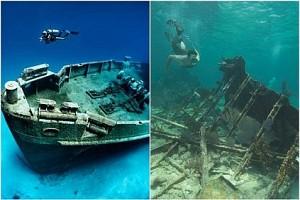Archaeologists are still struggling to gather enough evidence before reaching the final conclusions about the 3,400-year-old city in Iraq.

Drought
Iraq, a Middle Eastern country, has been experiencing the worst drought since last year. Due to this, the public is suffering from lack of access to water. As a result, the country's water supply to Mosul, the country's largest dam, has plummeted. Due to this, the old ruined city that was under water is visible outside.

Experts exploring the area say the city may have prospered during Tutankhamun's rule in Egypt.
Main city
Archaeologists say the city may have been a major city for parts of present-day Iraq and Syria during the Bronze Age, and may have been part of the Mittani Kingdom.

Earlier this year, the team explored areas of a larger city, including a warehouse, an industrial building, and forts. There are also pottery written in cuneiform, a thousand-year-old script.
The city is thought to have been destroyed by an earthquake in 1350 BC. Thus the city sank into the dust. Surprisingly, the traces of the city remained intact despite the floodwaters.
Palace
Researchers have discovered that there is a palace in this place due to the drought in 2018. Then it was submerged in water. Therefore, the study team is coming up with various plans to protect the remaining areas from floods.

Built in the year 1980, the Mosul Dam is the largest reservoir in the country. Researchers say the study of the city buried beneath it will be an important part of world history.











